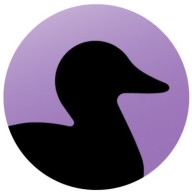

Synopsys Software Risk Manager and Kodem's Dynamic SCA compete in software security analysis. Synopsys is favored for support and pricing, while Kodem stands out with its extensive feature set.
Features: Synopsys provides comprehensive risk assessment, compliance tools, and in-depth vulnerability analysis. Kodem includes advanced real-time analysis, open-source integration, and rapid identification of vulnerabilities.
Ease of Deployment and Customer Service: Synopsys offers seamless deployment and responsive support. Kodem ensures flexibility and exceptional support for integration into various environments.
Pricing and ROI: Synopsys has a competitive setup cost with strong ROI due to effective management and support services. Kodem, although more expensive, offers significant ROI through advanced features and real-time management.

Kodem's Dynamic SCA provides advanced security measures to enhance the software development lifecycle by identifying vulnerabilities in real-time, enabling faster remediation and improved application security.
This technology uses an intelligent and adaptable approach to static code analysis, offering developers the ability to integrate security seamlessly within their existing workflows. With the capability to pinpoint vulnerabilities without false positives, it reduces the burden on developer teams, improving efficiency and security posture. It is particularly beneficial for fast-paced development environments where continuous integration and rapid deployment are standard.
What are the key features of Kodem's Dynamic SCA?Industries such as finance and healthcare implement Kodem's Dynamic SCA to safeguard sensitive information, leveraging its capabilities to comply with strict regulatory requirements. Its integration is straightforward, allowing organizations to maintain high security without disrupting business operations.
Software Risk Manager is an application security posture management (ASPM) solution that enables security and development teams to manage their application security programs at enterprise scale. By unifying policy, test orchestration, correlation, prioritization, and built-in static application security testing (SAST) and software composition analysis (SCA) engines, organizations can streamline their security activities across the enterprise.
We monitor all Static Application Security Testing (SAST) reviews to prevent fraudulent reviews and keep review quality high. We do not post reviews by company employees or direct competitors. We validate each review for authenticity via cross-reference with LinkedIn, and personal follow-up with the reviewer when necessary.